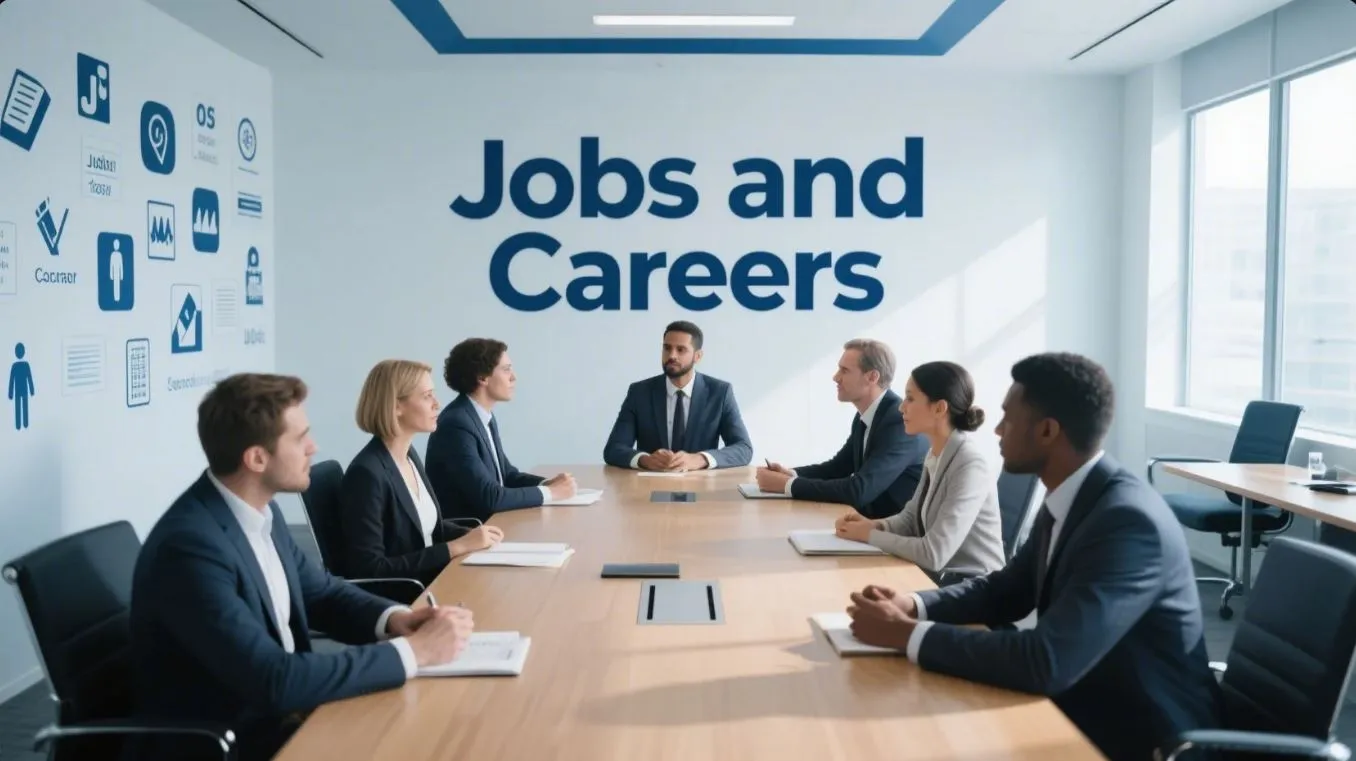Bài viết này tổng hợp 100 từ vựng và cụm từ tiếng Anh chuyên ngành Quản trị nguồn nhân lực, giúp bạn mở rộng vốn từ vựng trong lĩnh vực này. Những thuật ngữ này bao gồm các khía cạnh như tuyển dụng, đào tạo, đánh giá nhân viên và quản lý hiệu suất, hỗ trợ bạn trong học tập và công việc.
Từ vựng nghề Quản trị nguồn nhân lực
| Human Resources (HR) | Nhân sự (HR) |
| Talent Acquisition | Thu hút nhân tài |
| Employee Engagement | Gắn kết nhân viên |
| Recruitment Process | Quy trình tuyển dụng |
| Onboarding | Hội nhập nhân viên mới |
| Performance Appraisal | Đánh giá hiệu suất |
| Training and Development | Đào tạo và phát triển |
| Compensation and Benefits | Lương thưởng và phúc lợi |
| Workforce Planning | Kế hoạch nhân lực |
| Employee Retention | Giữ chân nhân viên |
| HR Policies | Chính sách nhân sự |
| Organizational Culture | Văn hóa tổ chức |
| Job Description | Mô tả công việc |
| Employment Law | Luật lao động |
| Payroll Management | Quản lý tiền lương |
| Succession Planning | Kế hoạch kế thừa |
| HR Analytics | Phân tích nhân sự |
| Employee Relations | Quan hệ nhân viên |
| Conflict Resolution | Giải quyết xung đột |
| Talent Management | Quản lý tài năng |
| Staffing | Bố trí nhân sự |
| HR Strategy | Chiến lược nhân sự |
| Employee Satisfaction | Sự hài lòng của nhân viên |
| HR Metrics | Chỉ số nhân sự |
| Human Capital | Vốn nhân lực |
| Job Analysis | Phân tích công việc |
| Recruitment Strategy | Chiến lược tuyển dụng |
| Employee Handbook | Sổ tay nhân viên |
| Diversity and Inclusion | Đa dạng và hòa nhập |
| HR Compliance | Tuân thủ quy định nhân sự |
| Labor Relations | Quan hệ lao động |
| Job Evaluation | Đánh giá công việc |
| Workplace Safety | An toàn tại nơi làm việc |
| HR Consulting | Tư vấn nhân sự |
| Employee Wellness | Sức khỏe nhân viên |
| HRIS (Human Resource Information System) | HRIS (Hệ thống thông tin nhân sự) |
| Organizational Development | Phát triển tổ chức |
| Performance Management | Quản lý hiệu suất |
| Compensation Structure | Cấu trúc lương thưởng |
| Benefit Administration | Quản lý phúc lợi |
| Talent Development | Phát triển tài năng |
| Career Development | Phát triển nghề nghiệp |
| HR Operations | Hoạt động nhân sự |
| Exit Interviews | Phỏng vấn ra đi |
| Employee Recognition | Công nhận nhân viên |
| HR Budgeting | Dự toán ngân sách nhân sự |
| Workforce Diversity | Đa dạng lực lượng lao động |
| Labor Market Trends | Xu hướng thị trường lao động |
| HR Technology | Công nghệ nhân sự |
| Skills Assessment | Đánh giá kỹ năng |
| Employee Assistance Program (EAP) | Chương trình hỗ trợ nhân viên (EAP) |
| Organizational Behavior | Hành vi tổ chức |
| Job Fair | Ngày hội việc làm |
| HR Reporting | Báo cáo nhân sự |
| Employee Grievances | Khiếu nại nhân viên |
| Work-Life Balance | Cân bằng công việc và cuộc sống |
| Human Resource Planning | Lập kế hoạch nhân sự |
| HR Audit | Kiểm toán nhân sự |
| Performance Metrics | Chỉ số hiệu suất |
| Employee Feedback | Phản hồi nhân viên |
| Employee Development Programs | Chương trình phát triển nhân viên |
| Talent Pool | Nguồn tài năng |
| Compensation Analysis | Phân tích lương thưởng |
| Recruitment Metrics | Chỉ số tuyển dụng |
| Employee Benefits Package | Gói phúc lợi nhân viên |
| Organizational Change | Thay đổi tổ chức |
| HR Best Practices | Các thực tiễn tốt nhất trong nhân sự |
| Workforce Analysis | Phân tích lực lượng lao động |
| Leadership Development | Phát triển lãnh đạo |
| Employee Surveys | Khảo sát nhân viên |
| HR Challenges | Thách thức trong nhân sự |
| Job Retention Strategies | Chiến lược giữ chân nhân viên |
| Organizational Design | Thiết kế tổ chức |
| Employee Motivation | Động lực nhân viên |
| Workplace Culture Assessment | Đánh giá văn hóa nơi làm việc |
| Talent Acquisition Strategy | Chiến lược thu hút nhân tài |
| HR Policies and Procedures | Chính sách và quy trình nhân sự |
| Human Resource Development | Phát triển nguồn nhân lực |
| Compensation Benchmarking | Đối chuẩn lương thưởng |
| HR Communication | Giao tiếp trong nhân sự |
| Employee Orientation | Định hướng nhân viên |
| Training Needs Analysis | Phân tích nhu cầu đào tạo |
| Workforce Trends | Xu hướng lực lượng lao động |
| Employee Incentives | Các khoản khích lệ nhân viên |
| Performance Review Process | Quy trình đánh giá hiệu suất |
| Workforce Segmentation | Phân đoạn lực lượng lao động |
| HR Risk Management | Quản lý rủi ro nhân sự |
| Organizational Health | Sức khỏe tổ chức |
| Employee Career Pathing | Lộ trình phát triển nghề nghiệp của nhân viên |
| HR Technology Integration | Tích hợp công nghệ nhân sự |
| Workforce Planning Strategies | Chiến lược kế hoạch nhân lực |
| Talent Sourcing | Tìm kiếm tài năng |
| Job Recruitment | Tuyển dụng công việc |
| Employee Benefits Administration | Quản lý phúc lợi nhân viên |
| HR Data Analysis | Phân tích dữ liệu nhân sự |
| Job Matching | Ghép nối công việc |
| Employee Loyalty Programs | Chương trình trung thành của nhân viên |
| Workplace Diversity Initiatives | Sáng kiến đa dạng hóa nơi làm việc |
| HR Strategy Development | Phát triển chiến lược nhân sự |
| Human Resources Development Plan | Kế hoạch phát triển nguồn nhân lực |
Bài viết sử dụng thuật ngữ trên
- Human Resources (HR) – “The HR department is responsible for managing employee relations and benefits.”
- Talent Acquisition – “Our talent acquisition team focuses on attracting and recruiting top candidates for the company.”
- Employee Engagement – “Employee engagement initiatives are crucial for maintaining high levels of productivity and job satisfaction.”
- Recruitment Process – “We have streamlined our recruitment process to ensure a faster and more efficient hiring experience.”
- Onboarding – “The onboarding program helps new hires integrate into the company and understand their roles.”
- Performance Appraisal – “Performance appraisals are conducted annually to evaluate employees’ achievements and set goals.”
- Training and Development – “Training and development programs are essential for enhancing employees’ skills and career growth.”
- Compensation and Benefits – “Our compensation and benefits package includes competitive salaries, health insurance, and retirement plans.”
- Workforce Planning – “Effective workforce planning ensures that the right number of employees with the right skills are available to meet organizational goals.”
- Employee Retention – “Implementing strategies for employee retention can help reduce turnover and retain top talent.”
- HR Policies – “HR policies outline the rules and guidelines for managing employee conduct and performance.”
- Organizational Culture – “Organizational culture plays a significant role in shaping employee behavior and company values.”
- Job Description – “A clear job description helps candidates understand the responsibilities and requirements of the position.”
- Employment Law – “Staying updated with employment law is crucial for ensuring compliance and avoiding legal issues.”
- Payroll Management – “Payroll management involves processing employee salaries, deductions, and benefits accurately and on time.”
- Succession Planning – “Succession planning helps identify and develop internal candidates to fill key positions in the future.”
- HR Analytics – “HR analytics provides data-driven insights into employee performance and HR practices.”
- Employee Relations – “Employee relations strategies aim to improve communication and resolve workplace conflicts.”
- Conflict Resolution – “Effective conflict resolution techniques can help address and resolve disagreements between employees.”
- Talent Management – “Talent management focuses on developing and retaining high-performing employees within the organization.”
- Staffing – “Staffing involves recruiting, hiring, and placing employees in appropriate roles to meet organizational needs.”
- HR Strategy – “An HR strategy aligns human resource practices with the company’s overall business objectives.”
- Employee Satisfaction – “Regular surveys help measure employee satisfaction and identify areas for improvement.”
- HR Metrics – “HR metrics track various aspects of HR performance, such as turnover rates and employee engagement.”
- Human Capital – “Investing in human capital involves developing employees’ skills and knowledge to enhance organizational performance.”
- Job Analysis – “Job analysis provides a detailed understanding of the duties, responsibilities, and requirements of a specific role.”
- Recruitment Strategy – “A well-defined recruitment strategy helps attract and select the best candidates for open positions.”
- Employee Handbook – “The employee handbook contains important information about company policies, procedures, and expectations.”
- Diversity and Inclusion – “Promoting diversity and inclusion in the workplace creates a more innovative and equitable environment.”
- HR Compliance – “HR compliance ensures that the company’s HR practices adhere to legal and regulatory requirements.”
- Labor Relations – “Effective labor relations involve managing interactions between the company and its employees or unions.”
- Job Evaluation – “Job evaluation assesses the relative worth of different positions within the organization.”
- Workplace Safety – “Workplace safety measures are implemented to protect employees from hazards and ensure a safe working environment.”
- HR Consulting – “HR consulting services provide expert advice on managing HR functions and improving organizational effectiveness.”
- Employee Wellness – “Employee wellness programs aim to promote physical and mental health among staff members.”
- HRIS (Human Resource Information System) – “An HRIS is used to manage employee data, track performance, and streamline HR processes.”
- Organizational Development – “Organizational development focuses on improving the overall effectiveness and health of the organization.”
- Performance Management – “Performance management involves setting goals, providing feedback, and evaluating employee performance.”
- Compensation Structure – “The compensation structure determines how salaries and benefits are distributed among employees.”
- Benefit Administration – “Benefit administration includes managing employee benefits such as health insurance and retirement plans.”
- Talent Development – “Talent development programs aim to enhance employees’ skills and prepare them for future roles.”
- Career Development – “Career development opportunities help employees advance their careers within the organization.”
- HR Operations – “HR operations encompass the day-to-day activities involved in managing human resources.”
- Exit Interviews – “Exit interviews provide insights into why employees leave the company and how to improve retention.”
- Employee Recognition – “Employee recognition programs acknowledge and reward outstanding performance and achievements.”
- HR Budgeting – “HR budgeting involves planning and allocating resources for various HR activities and initiatives.”
- Workforce Diversity – “Workforce diversity ensures a mix of backgrounds, perspectives, and experiences within the organization.”
- Labor Market Trends – “Staying informed about labor market trends helps in making strategic HR decisions and adapting to changes.”
- HR Technology – “HR technology includes tools and systems that support various HR functions, such as recruitment and payroll.”
- Skills Assessment – “Skills assessments help identify employees’ strengths and areas for improvement.”
- Employee Assistance Program (EAP) – “An EAP provides confidential support and resources for employees dealing with personal or work-related issues.”
- Organizational Behavior – “Understanding organizational behavior helps in managing employee dynamics and fostering a positive work environment.”
- Job Fair – “A job fair is an event where employers and job seekers can meet and discuss employment opportunities.”
- HR Reporting – “HR reporting involves generating reports on various HR metrics and performance indicators.”
- Employee Grievances – “Addressing employee grievances promptly helps maintain a positive work environment and resolve issues.”
- Work-Life Balance – “Promoting work-life balance helps employees manage their professional and personal responsibilities effectively.”
- Human Resource Planning – “Human resource planning ensures that the organization has the right number of employees with the right skills.”
- HR Audit – “An HR audit evaluates the effectiveness and compliance of HR practices and policies.”
- Performance Metrics – “Performance metrics track employee performance and help in making data-driven HR decisions.”
- Employee Feedback – “Collecting employee feedback helps identify areas for improvement and enhance workplace satisfaction.”
- Employee Development Programs – “Employee development programs provide opportunities for learning and growth within the organization.”
- Talent Pool – “Building a talent pool involves creating a pool of qualified candidates for current and future job openings.”
- Compensation Analysis – “Compensation analysis compares salaries and benefits to ensure competitiveness and fairness.”
- Recruitment Metrics – “Recruitment metrics track the effectiveness of hiring processes and help improve recruitment strategies.”
- Employee Benefits Package – “An employee benefits package includes various benefits such as health insurance, retirement plans, and paid time off.”
- Organizational Change – “Managing organizational change involves guiding employees through transitions and adapting to new processes.”
- HR Best Practices – “Implementing HR best practices helps improve HR processes and enhance overall organizational effectiveness.”
- Workforce Analysis – “Workforce analysis assesses the composition and needs of the employee base to align with business goals.”
- Leadership Development – “Leadership development programs focus on building skills and capabilities in current and future leaders.”
- Employee Surveys – “Employee surveys gather feedback on job satisfaction, engagement, and areas for improvement.”
- HR Challenges – “HR challenges include managing employee conflicts, adapting to legal changes, and improving retention rates.”
- Job Retention Strategies – “Job retention strategies aim to keep valuable employees and reduce turnover.”
- Organizational Design – “Organizational design involves structuring the organization to optimize efficiency and effectiveness.”
- Employee Motivation – “Employee motivation techniques include recognition, rewards, and career development opportunities.”
- Workplace Culture Assessment – “A workplace culture assessment evaluates the company’s culture and identifies areas for improvement.”
- Talent Acquisition Strategy – “A talent acquisition strategy outlines how the organization will attract and recruit top talent.”
- HR Policies and Procedures – “HR policies and procedures provide guidelines for managing various HR functions and employee issues.”
- Human Resource Development – “Human resource development focuses on enhancing employees’ skills and knowledge to support organizational goals.”
- Compensation Benchmarking – “Compensation benchmarking compares salary and benefit levels to industry standards and competitors.”
- HR Communication – “Effective HR communication ensures that employees are informed about policies, procedures, and updates.”
- Employee Orientation – “Employee orientation introduces new hires to the company’s culture, policies, and their specific roles.”
- Training Needs Analysis – “Training needs analysis identifies gaps in skills and knowledge and determines appropriate training programs.”
- Workforce Trends – “Workforce trends include changes in employee expectations, technology adoption, and industry developments.”
- Employee Incentives – “Employee incentives are rewards or benefits offered to motivate and retain employees.”
- Performance Review Process – “The performance review process includes setting goals, providing feedback, and evaluating employee performance.”
- Workforce Segmentation – “Workforce segmentation involves dividing employees into groups based on factors such as skills, roles, or performance.”
- HR Risk Management – “HR risk management identifies and mitigates potential risks related to human resources and employment practices.”
- Organizational Health – “Organizational health refers to the overall well-being and effectiveness of the organization and its employees.”
- Employee Career Pathing – “Employee career pathing helps employees plan and achieve their career goals within the organization.”
- HR Technology Integration – “HR technology integration involves implementing and connecting various HR systems and tools.”
- Workforce Planning Strategies – “Workforce planning strategies ensure that the organization has the right people in place to achieve its goals.”
- Talent Sourcing – “Talent sourcing involves identifying and attracting potential candidates for job openings.”
- Job Recruitment – “Job recruitment focuses on finding and hiring the best candidates to fill open positions.”
- Employee Benefits Administration – “Employee benefits administration manages and oversees employee benefits programs and services.”
- HR Data Analysis – “HR data analysis involves examining data to make informed decisions about HR practices and strategies.”
- Job Matching – “Job matching aligns candidates’ skills and experience with the requirements of specific job roles.”
- Employee Loyalty Programs – “Employee loyalty programs reward and recognize employees for their long-term commitment to the company.”
- Workplace Diversity Initiatives – “Workplace diversity initiatives aim to create an inclusive environment and promote diverse perspectives.”
- HR Strategy Development – “HR strategy development involves creating plans to align human resource practices with business objectives.”
- Human Resources Development Plan – “A human resources development plan outlines strategies for improving employee skills and supporting organizational growth.”
Bài tập
- The __________ department is responsible for handling all HR-related tasks.
- Our __________ team is dedicated to finding and hiring the best candidates.
- Increasing __________ can lead to higher productivity and job satisfaction.
- We have streamlined our __________ to make the hiring process more efficient.
- The __________ program helps new employees adjust to their roles and the company culture.
- Regular __________ are conducted to evaluate employees’ performance and set future goals.
- __________ programs are essential for enhancing employees’ skills and career growth.
- The __________ package includes salary, health benefits, and retirement plans.
- Effective __________ ensures that we have the right people in the right roles.
- Implementing strategies for __________ can help reduce employee turnover.
- HR __________ provide guidelines for managing various aspects of employment.
- A strong __________ influences employee behavior and company values.
- A detailed __________ helps candidates understand the responsibilities and requirements of a position.
- Understanding __________ is crucial for avoiding legal issues and ensuring compliance.
- __________ involves managing employees’ salaries, deductions, and benefits.
- __________ helps in preparing for future leadership needs by identifying and developing potential leaders.
- __________ offers data-driven insights into employee performance and HR practices.
- __________ involves managing interactions between employees and resolving conflicts.
- __________ techniques are used to address and resolve disagreements in the workplace.
- __________ focuses on developing and retaining high-performing employees within the organization.
- __________ includes recruiting, hiring, and placing employees in suitable roles.
- An effective __________ aligns HR practices with the company’s overall business objectives.
- Measuring __________ through surveys helps identify areas for improvement.
- __________ track various aspects of HR performance, such as turnover rates and employee engagement.
- Investing in __________ involves developing employees’ skills to enhance organizational performance.
- __________ provides a detailed understanding of job duties, responsibilities, and requirements.
- A well-defined __________ helps attract and select the best candidates for open positions.
- The __________ contains important information about company policies and procedures.
- Promoting __________ in the workplace creates a more innovative and inclusive environment.
- Ensuring __________ helps in adhering to legal and regulatory requirements.
- Effective __________ management involves handling interactions between the company and unions.
- __________ assesses the relative worth of different positions within the organization.
- Implementing __________ measures protects employees from hazards and ensures a safe working environment.
- __________ services offer expert advice on improving HR functions and practices.
- __________ programs promote physical and mental health among employees.
- An __________ helps manage employee data, track performance, and streamline HR processes.
- __________ focuses on improving organizational effectiveness and employee well-being.
- __________ involves setting goals, providing feedback, and evaluating performance.
- The __________ determines how salaries and benefits are structured and distributed.
- __________ includes managing and overseeing employee benefits such as health insurance and retirement plans.
- __________ programs aim to enhance employees’ skills and prepare them for future roles.
- __________ provides opportunities for employees to advance their careers within the organization.
- __________ encompasses the day-to-day activities of managing human resources.
- __________ provide insights into why employees leave the company and how to improve retention.
- __________ programs recognize and reward employees for their outstanding performance.
- __________ involves planning and allocating resources for various HR activities and initiatives.
- __________ ensures a mix of backgrounds, perspectives, and experiences within the organization.
- Staying informed about __________ helps in making strategic HR decisions and adapting to changes.
- __________ includes tools and systems that support various HR functions like recruitment and payroll.
- __________ helps identify employees’ strengths and areas for improvement.
- An __________ provides confidential support and resources for employees dealing with personal or work-related issues.
- Understanding __________ helps in managing employee dynamics and fostering a positive work environment.
- A __________ is an event where employers and job seekers can meet and discuss job opportunities.
- __________ involves generating reports on various HR metrics and performance indicators.
- Addressing __________ promptly helps maintain a positive work environment and resolve issues.
- Promoting __________ helps employees balance their professional and personal responsibilities.
- __________ ensures that the organization has the right number of employees with the right skills.
- An __________ evaluates the effectiveness and compliance of HR practices and policies.
- __________ track employee performance and help in making data-driven HR decisions.
- Collecting __________ helps identify areas for improvement and enhance workplace satisfaction.
- __________ provide opportunities for learning and growth within the organization.
- Building a __________ involves creating a pool of qualified candidates for current and future job openings.
- __________ compares salaries and benefits to industry standards and competitors.
- __________ track the effectiveness of hiring processes and help improve recruitment strategies.
- An __________ includes benefits such as health insurance, retirement plans, and paid time off.
- Managing __________ involves guiding employees through transitions and adapting to new processes.
- Implementing __________ helps improve HR processes and enhance overall organizational effectiveness.
- __________ assesses the composition and needs of the employee base to align with business goals.
- __________ programs focus on building skills and capabilities in current and future leaders.
- __________ gather feedback on job satisfaction, engagement, and areas for improvement.
- Common __________ include managing conflicts, adapting to legal changes, and improving retention.
- __________ aim to keep valuable employees and reduce turnover.
- __________ involves structuring the organization to optimize efficiency and effectiveness.
- __________ techniques include recognition, rewards, and career development opportunities.
- A __________ evaluates the company’s culture and identifies areas for improvement.
- A __________ outlines how the organization will attract and recruit top talent.
- __________ provide guidelines for managing various HR functions and employee issues.
- __________ focuses on enhancing employees’ skills and knowledge to support organizational goals.
- __________ compares salary and benefit levels to industry standards and competitors.
- Effective __________ ensures that employees are informed about policies, procedures, and updates.
- __________ introduces new hires to the company’s culture, policies, and their specific roles.
- __________ identifies gaps in skills and knowledge and determines appropriate training programs.
- __________ include changes in employee expectations, technology adoption, and industry developments.
- __________ are rewards or benefits offered to motivate and retain employees.
- The __________ includes setting goals, providing feedback, and evaluating employee performance.
- __________ involves dividing employees into groups based on skills, roles, or performance.
- __________ identifies and mitigates potential risks related to human resources and employment practices.
- __________ refers to the overall well-being and effectiveness of the organization and its employees.
- __________ helps employees plan and achieve their career goals within the organization.
- __________ involves implementing and connecting various HR systems and tools.
- __________ ensure that the organization has the right people in place to achieve its goals.
- __________ involves identifying and attracting potential candidates for job openings.
- __________ focuses on finding and hiring the best candidates to fill open positions.
- __________ manages and oversees employee benefits programs and services.
- __________ involves examining data to make informed decisions about HR practices and strategies.
- __________ aligns candidates’ skills and experience with the requirements of specific job roles.
- __________ reward and recognize employees for their long-term commitment to the company.
- __________ aim to create an inclusive environment and promote diverse perspectives.
- __________ involves creating plans to align human resource practices with business objectives.
- A __________ outlines strategies for improving employee skills and supporting organizational growth.
Đáp án
- Human Resources (HR)
- Talent Acquisition
- Employee Engagement
- Recruitment Process
- Onboarding
- Performance Appraisal
- Training and Development
- Compensation and Benefits
- Workforce Planning
- Employee Retention
- HR Policies
- Organizational Culture
- Job Description
- Employment Law
- Payroll Management
- Succession Planning
- HR Analytics
- Employee Relations
- Conflict Resolution
- Talent Management
- Staffing
- HR Strategy
- Employee Satisfaction
- HR Metrics
- Human Capital
- Job Analysis
- Recruitment Strategy
- Employee Handbook
- Diversity and Inclusion
- HR Compliance
- Labor Relations
- Job Evaluation
- Workplace Safety
- HR Consulting
- Employee Wellness
- HRIS (Human Resource Information System)
- Organizational Development
- Performance Management
- Compensation Structure
- Benefit Administration
- Talent Development
- Career Development
- HR Operations
- Exit Interviews
- Employee Recognition
- HR Budgeting
- Workforce Diversity
- Labor Market Trends
- HR Technology
- Skills Assessment
- Employee Assistance Program (EAP)
- Organizational Behavior
- Job Fair
- HR Reporting
- Employee Grievances
- Work-Life Balance
- Human Resource Planning
- HR Audit
- Performance Metrics
- Employee Feedback
- Employee Development Programs
- Talent Pool
- Compensation Analysis
- Recruitment Metrics
- Employee Benefits Package
- Organizational Change
- HR Best Practices
- Workforce Analysis
- Leadership Development
- Employee Surveys
- HR Challenges
- Job Retention Strategies
- Organizational Design
- Employee Motivation
- Workplace Culture Assessment
- Talent Acquisition Strategy
- HR Policies and Procedures
- Human Resource Development
- Compensation Benchmarking
- HR Communication
- Employee Orientation
- Training Needs Analysis
- Workforce Trends
- Employee Incentives
- Performance Review Process
- Workforce Segmentation
- HR Risk Management
- Organizational Health
- Employee Career Pathing
- HR Technology Integration
- Workforce Planning Strategies
- Talent Sourcing
- Job Recruitment
- Employee Benefits Administration
- HR Data Analysis
- Job Matching
- Employee Loyalty Programs
- Workplace Diversity Initiatives
- HR Strategy Development
- Human Resources Development Plan











